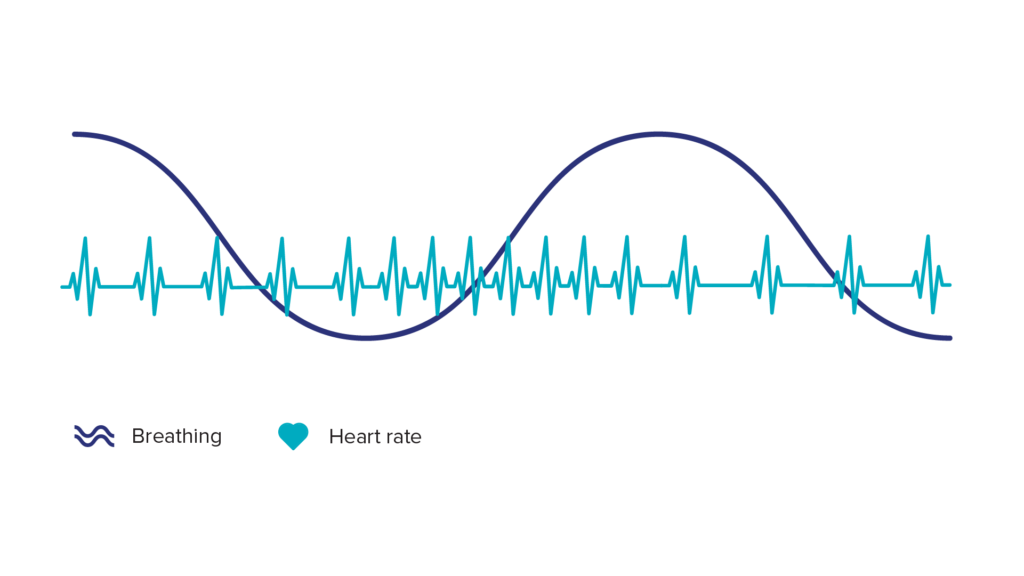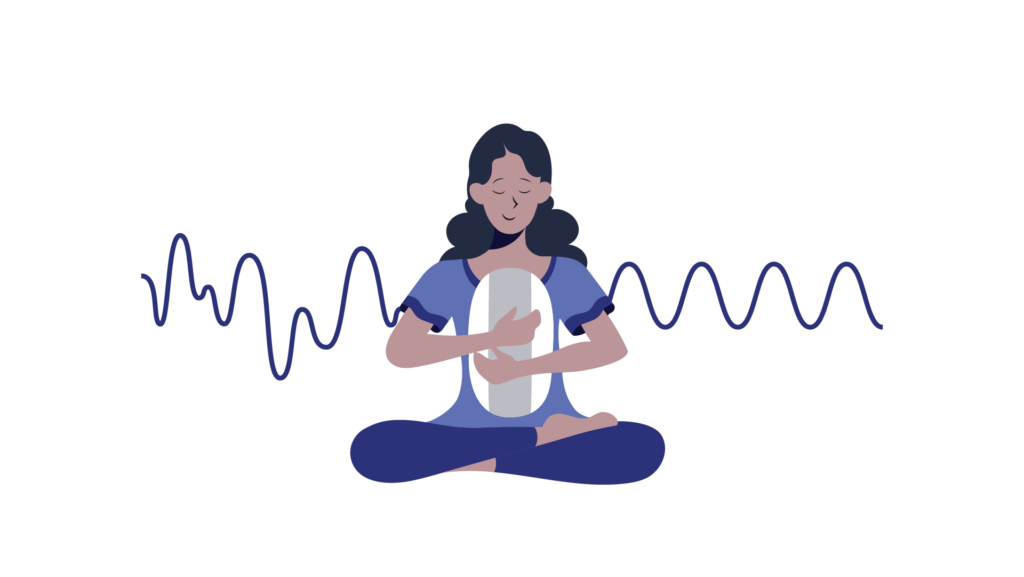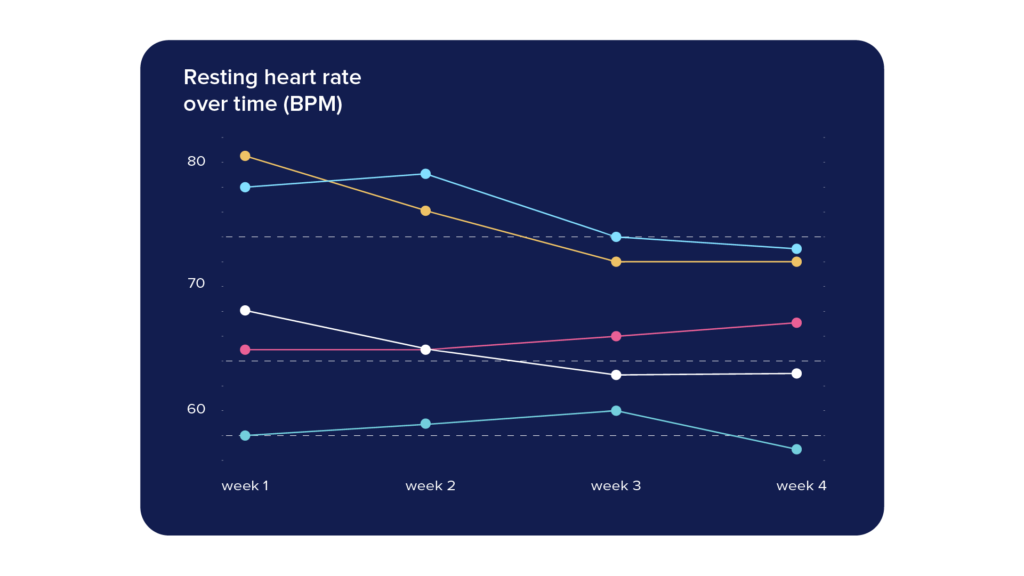Somnox’ mission is to unlock human potential by improving the sleep of 100 million people by 2030. We are continually working with sleep science experts, neuroscientists and health professionals to ensure that our products live up to this goal. In our last experiment, we investigated how the Sleep Robot supports coherent breathing to calm you down. We observed that coherent breathing exercises with the Somnox Sleep Robot before bedtime and just after waking up aligns your breathing and heart rate, and helps decrease resting heart rate, which are indicators of relaxation. More research into the effects of coherent breathing will be done in future studies.
Somnox is committed to developing products that you can trust. We continually improve our products based upon user experiences and the latest research. Sleep has a large impact on your wellbeing and it is important that we take your health seriously. Therefore, we will keep sharing our learnings with you. Wondering whether Somnox is right for you? Take our quiz and get our free advice.
Table of Contents
What is coherent breathing?
You breathe in and breathe out, without actually thinking about it. You unconsciously inhale to let air into your lungs and oxygenate your body’s tissues. What’s unique about breathing is that you can take it under conscious control too. Coherent breathing is all about conscious, slow and rhythmic breathing. Your natural breathing rate ranges from ten to twenty breaths per minute (1). With coherent breathing, you decrease this breathing rate significantly to six breaths per minute. This has been proven to have a relaxing effect on the body and mind (2).
The effect of coherent breathing has something to do with your autonomic nervous system, which can be divided into the sympathetic and parasympathetic nervous system. The sympathetic nervous system controls your stress responses (fight-or-flight) (3,4). The parasympathetic nervous system makes sure your body gets rest for restorative purposes (rest and digest) (3,4). A lower breathing rate and longer exhales lead to parasympathetic effects that initiate a relaxation response (2,5,6). Thus, slow coherent breathing transforms the body from a stressed state into a relaxed state which is favorable for a good night’s sleep (7).
Coherent breathing example: breathe in for four seconds… and breathe out for six seconds… do this breathing exercise for 10 minutes.
How is coherent breathing related to your heartbeat?
What’s interesting, is that coherent breathing impacts your heart rate. While breathing in, your heart rate goes up and while breathing out, your heart rate slightly decreases (see Figure 1 below) (8). This phenomenon is called heart coherence, and is reached during coherent breathing or when experiencing positive emotions, such as love, joy and gratitude. It’s a sign of a happy and healthy body that is resilient to stressful events that can be encountered during the day (9). 
Figure 1: Heart rate goes up while breathing in and heart rate goes down while breathing out. This occurs when you practice coherent breathing and is a sign of a stress-resilient body.
How to do coherent breathing with Somnox?
Coherent breathing can relieve stress and therefore help you fall asleep more easily (9). You can use the Somnox Sleep Robot to do coherent breathing exercises (see Figure 2). We recommend performing these exercises just before going to bed for a good night’s sleep, or just after waking up to start the day peacefully.
The following settings for the Sleep Robot are recommended:
- Program: Napping
- Breathing start rate: 6 breaths per minute
- Breathing end rate: 6 breaths per minute
- Breathing duration: 10-15 minutes
- Select some soothing sounds according to your preference
You can change your breathing settings in the mobile application. More information how to do this can be found here:

Figure 2: With the Sleep Robot, you can practice coherent breathing which consists of a regular breathing pattern and has a sinus-like effect on heart rate. This is a sign of parasympathetic dominance.
Let’s take a closer look at our experiment
The Somnox Sleep Robot is designed to let go of stress and prepare the mind for sleep with breathing exercises. After all, hyperarousal (an overactive body and mind) is a very important sleep influencing factor (10-12). Heart rate is an important measure for stress. Therefore, Somnox has investigated the effects of coherent breathing with the Sleep Robot on heart rate.
Five volunteers participated in this four-week experiment. In week one, baseline heart rate measurements were done daily in the morning. In week two, three and four, participants did coherent breathing exercises in the morning and evening while heart rate was monitored (using the PolarH10 Chest Monitor). The breathing exercises consisted of a daily 10-minute program with a breathing rate of 5 or 6 breaths per minute guided by the Somnox Sleep Robot.
Our research team has performed the data analysis and gained two important findings.
Finding (1): coherent breathing with the Sleep Robot has an effect on heart rate and leads to heart coherence
Our research team observed that coherent breathing exercises with the Sleep Robot indeed have effects on heart rate and leads to heart coherence. While breathing in, heart rate goes up and while breathing out, heart rate goes down. This is a sign of parasympathetic activity which is part of the relaxation mechanism of your body. In the video below, Julian Jagtenberg, founder of Somnox, demonstrates this phenomenon.
Finding (2): coherent breathing with the Sleep Robot can decrease resting heart rate
We also observed that coherent breathing with the Sleep Robot decreased resting heart rate over the timeframe of four weeks in three out of five participants (see Figure 3). In week one, baseline measurements were conducted. In week two, three and four, participants did coherent breathing exercises with the Sleep Robot. As you can see in Figure 3, resting heart rate decreased or stayed almost constant compared to week one. A lower resting heart rate is a sign of relaxation and overall health & wellbeing, and therefore interesting to investigate further in future experiments.

Figure 3: This graph shows the resting heart rate of participants over four weeks.
What’s next?
Stress has a large impact on your sleep. The Sleep Robot can help initiate a relaxation response with coherent breathing exercises. These exercises give you a calm mind and prepare you for bed. In our experiment, we observed effects on heart rate which is an important parameter for evaluating stress and relaxation factors. We want to keep exploring the effects of breathing exercises with the Sleep Robot on relaxation and sleep.
Somnox is committed to developing products that you can trust. We continually improve our products based upon user experiences and the latest research. Sleep has a large impact on your wellbeing and it is important that we take your health seriously. Therefore, we will keep sharing our learnings with you. Wondering whether Somnox is right for you? Take our quiz and get our free advice.
Learn more about our latest findings: https://somnox.com/blog/research-sci-somnox/
References
- Russo MA, Santarelli DM, O’Rourke D. The physiological effects of slow breathing in the healthy human. Breathe. 2017;13(4):298-309
- Lin IM, Tai LY, Fan SY. Breathing at a rate of 5.5 breaths per minute with equal inhalation-to-exhalation ratio increases heart rate variability. International Journal of Psychophysiology. 2014;91(3):206-211
- Jänig W. Autonomic Nervous System. In: Schmidt R, Thews G, ed. by. Human Physiology. 2nd ed. Berlin: Springer; 1989. P.333-370
- Buijs RM. The autonomic nervous system: a balancing act. Handb Clin Neurol. 2013;117:1- 11
- Pal GK, Velkumary S, Madanmohan. Effect of short-term practice of breathing exercises on autonomic functions in normal human volunteers. Indian J Med Res. 2004;120(2):115-21
- Sunil Naik G, Gaur G, Pal G. Effect of Modified Slow Breathing Exercise on Perceived Stress and Basal Cardiovascular Parameters. Int J Yoga. 2019;11(1):53-58
- Jerath R, Beveridge C, Barnes V. Self-regulation of breathing as an adjunctive treatment of insomnia. Front Psychiatry. 2018;9(780):1-7
- Pinsky, M., 2006. Chapter 34 – Heart–Lung Interactions. In: R. Albert, A. Slutsky, M. Ranieri and J. Takala, ed., Clinical Critical Care Medicine. [online] Mosby, pp.369-382. Available at: https://www.sciencedirect.com/science/article/pii/B9780323028448500391
- Steffen P, Austin T, DeBarros A, Brown T. The Impact of Resonance Frequency Breathing on Measures of Heart Rate Variability, Blood Pressure and Mood. Front Public Health. 2017;5(222):1-6


